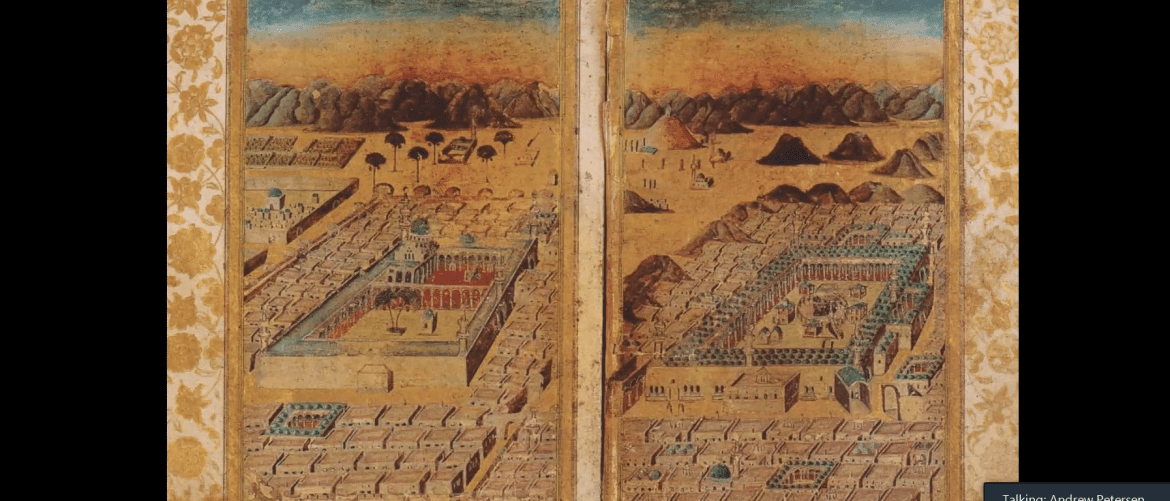For their Arts and Culture Lecture Series, Yunus Emre Institute in London hosted Andrew Petersen, Director of Research in Islamic Archaeology at University of Wales Trinity Saint David, for the online talk titled, “In the Footsteps of Pilgrims: Rediscovering the Ottoman Hajj”.
Petersen, who has many publications on the Ottoman pilgrimage and his book “The Archeology of the Syrian Hajj Route in the Medieval and Ottoman Periods Route”, gave important and interesting information about the development of the Syrian Hajj route from the 16th century to modern times. Petersen expressed that during the Ottoman period, the caravans of Damascus (Syria) and Cairo (Egypt) went to Hijaz by following different routes every year. The Hijaz region had come to Ottoman rule under Selim I with the conquest of Syria, Palestine and Egypt and the demolition of the Mamluk Empire. He emphasized that the number of stops between Damascus and Madinah increased in number after the Ottoman administration and important developments were made on the Syrian pilgrimage route.
The conversation moderated by Yahya Nurgat, who made his doctorate on the Hajj in Ottoman times at Clare College, University of Cambridge included the Suleymaniye Complex,also known as Tekiyye Complex, built by Mimar Sinan in Damascus on the pilgrimage road, as well as the archaeological and architectural remains of the Müzeyrib, Mafrak, Qalat Daba and Maan regions. These regions and complex were discussed with photographs and drawings from Petersen’s archaeological research studies in Jordan, Syria and Saudi Arabia.
Petersen emphasized the importance of the pilgrimage road for the Ottoman sultans, In order to meet the needs of the pilgrims traveling to Madinah and Mecca via the Damascus road and to have a more comfortable journey, mosques and masjids, caravanserais, inns, baths, Imaret houses, water wells and warehouses were built. He added that mountain passes were installed at certain points and officers were appointed to ensure security.
Also, in the talk it was mentioned that the Syrian pilgrimage route between Damascus and Mecca was used by the Prophet Muhammed before Islam as a trade route and it continued to be an important trade route in Ottoman times.
The talk was live on Yunus Emre Institute in London’s social media accounts and ended with a Q&A session.














